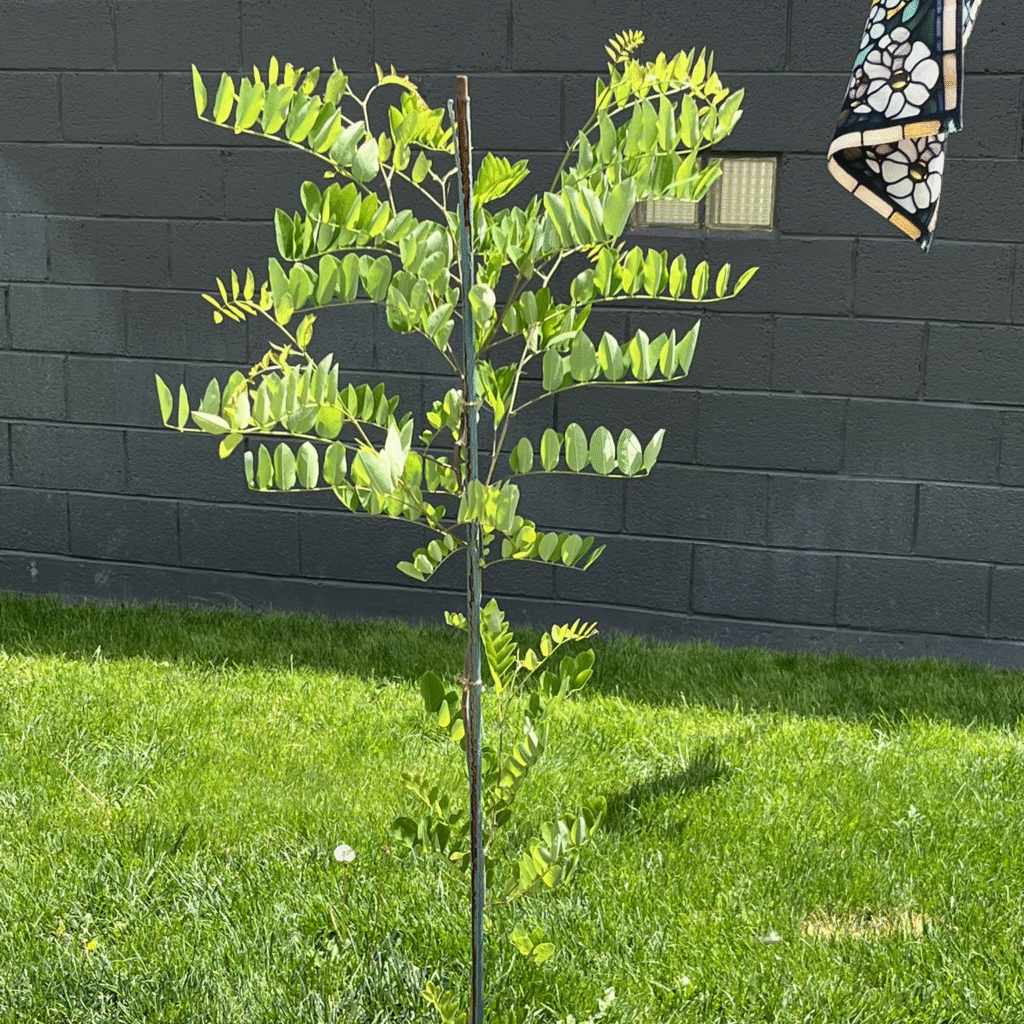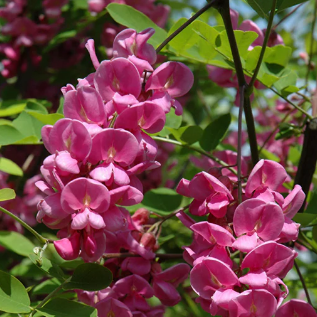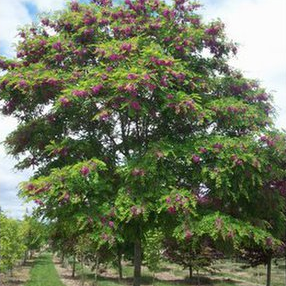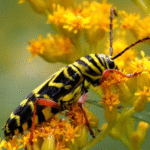The Newest Addition to the Garden … Purple Robe Locust

–Controversial? Yes, I know, but hear me out.
My back yard is east facing, but quite hot in the summer due to not having any trees near the house. This is great for solar panels, but not so great for human habitation in the warm months. So, without a covered patio, it feels more like “cooking” in the back yard in summer.
In addition, in winter, there is also a problem with ice accumulating on the ground near a shady wall and this has killed more candidate trees for that planting area than I care to admit. It’s a difficult location, both very hot in summer AND very cold/icy in the winter. In fact, I’m really surprised the grass even survives there! The seedling I planted has survived one winter and appears to be thriving, so I am optimistic that the aggressive growth habit of this tree will overcome the climate challenges in the space.
Some of the benefits that this tree choice brings to the table: first, it is super-ornamental, with very showy fragrant flowers in spring. The bees will absolutely love it! In fact, the description of this tree often includes “attractant for bees.” This cultivar is closely related to the black locust; it’s basically a black locust variant with the showiest flowers. The flowers are also edible, reported to taste somewhat like peas (though the rest of the tree has toxins). The leaves will be yellow in fall, typical of the locusts.
Second big benefit: it’s a fast-growing tree that will fill the space relatively quickly (growing 2-3 feet per year). It will fill out at 30 feet wide and high. Large enough to generate some shade but not so large as to cause any issues with buildings. The wood is extremely dense and useful. In larger plots, it can be grown for fence posts within about 15 years. Here, I might use some trimmings for plant stakes.
With some strategic pruning, this tree will fill the space I have and help bring down the temperature in the back yard a bit. This tree doesn’t give dense shade, but rather a light, filtered shade. I am optimistic it will provide enough shade to brunt the effects of high heat, but not so much shade as to interfere with the garden or the lawn. Added benefits: black locust is known to tolerate poor or acidic soils, is considered drought tolerant, and is nitrogen fixing (it helps improve the soil). This is a tree species that is recommended for permaculture garden plots both to provide light shade for understory plants and as a useful wood source. What’s not to love?


Downsides: this tree will have four-inch bean-shaped pods to be cleaned up in the fall. It’s located in a relatively defined space, so that shouldn’t be too difficult. Second: it propagates easily by suckers (especially after trimming). Another maintenance task (or opportunity to share with other gardeners, depending on how you look at it). Finally, the tree can also attract some pest problems including the locust borer. That’s one I will have to watch out for and deal with it as it comes up.


All in all, I am very happy to have found a tree that will grow in the location I have. I am willing to do the maintenance. All the fruit trees in the garden require annual maintenance, so this one will go on the list too.
I am looking forward to the showy flowers in the spring. Taken together with the crabapple flower show about the same time, it should be very lovely. A nice added enticement to get motivated to get out into the garden in spring!
